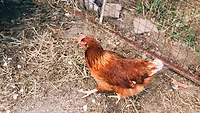Key Learning from Significant Marketplace Incidents

Photo Credit: Michelle Lee Photography/iStock/Getty Images Plus via Getty Images
Economic Adulteration of Ingredients with Unapproved Food Colorants
The early 2000s saw the first marketplace incidents where non-food-approved colorants were identified in food products. The first major incident occurred in the UK and affected both branded and own-label products in ambient, chilled, and frozen foods sectors. The root cause of the problem was paprika that had been adulterated with Sudan 1 (red), a dye commonly that is used in home care products. The colorant was in an ingredient used in a well know brand of Worcestershire sauce, which in turn had been used as flavoring ingredient in other formulated products, ranging from crisps, dehydrated noodle snacks, soups, sauces, and frozen and chilled entrées. Given the usage of Worcestershire sauce within the finished products was low and the level of paprika used as an ingredient in the Worcestershire sauce was low, the levels of Sudan 1 in the finished products was either at or between the limit of quantitation and the limits of detection for the analytical methods used at that time.
The contamination of Sudan 1 had been identified by the manufacturer of the Worcestershire sauce within the paprika, which originated from India. The UK’s Food Standards Agency (FSA) had been informed and demanded the names of all companies that had been supplied with the contaminated sauce. Our company was informed by both the vendor and the FSA. The FSA’s rationale and demands were very simple: The colorant was not approved for food use, and irrespective of the level in the finished product even if not detectable, it was identified as present through traceability and therefore must be removed from sale. The FSA also published the findings on their website and named all brands and own-label products impacted. Chaos ensued, with coverage of brands on the shelf on all news bulletins throughout the day and evening for several days of that week. The impact across the UK was enormous, increasing pressure on retailers and manufacturers to publicly recall products from the market. Damage to affected brands was enormous, with lost sales of 25 to 30 percent in several cases further compounded over the subsequent months. In several cases, the level of Sudan 1 in the product was parts per 100 trillion range. Nevertheless, the FSA insisted on action, which was complied with, and damaged brand reputations and sales into the future.
Key Learnings from Sudan and other colorant detections 2003 to 2019:
i. Vendors and Specification of Spices and Herbs
- Understand and apply the regulations governing permitted colorants in the markets where the products are made and where they will be sold. Codex is not appropriate.
- Raw material specifications must cover contaminants and authenticity. The specification must also ensure that labelling of materials on delivery packaging is unambiguous to prevent wrong addition.
- The specification and purchase agreements must specify the analytical methods to be used for contaminant monitoring and the limits of detection and quantification are appropriate.
- All vendors should be externally certified to an internationally recognized standards.
- The vendor must be able to demonstrate that raw materials are tested and monitored for key contaminants by a laboratory that is certified to ISO17025 for the methods being used and have clear action standards in place.
- Where materials are sourced from traders, that is, vendors who buy from multiple suppliers, repack or blend, and repack. The trader must ensure that each of their respective vendors are externally certified to internationally recognized standards. In addition, the Trader must be able to provide on demand evidence of contaminant performance for all of their vendors both for authenticity and other key contaminants.
- If blending materials, the trader must have in place controls to prevent cross contact and be able to demonstrate effective cleaning programs.
- Buying raw materials from the spot market must be avoided given the provenance and handling of these materials cannot be guaranteed
- Materials purchased for product development activities and or used in pilot facilities must be subject to the same controls as production materials
ii. Raw Materials Risk Assessment and Monitoring
- All vendors must be able to demonstrate that they manage the risks of both malicious and economic adulteration within their respective supply chains and have implemented suitable monitoring measures that are capable of identifying and isolating potentially adulterated materials.
- Similarly, each manufacturer must have carried out a supply chain risk assessment and implemented monitoring and controls systems.
- The risk assessment tools used should also use geopolitical and socioeconomic databases for risk factors such as crop failures, border closures, wars, etc.
- The rule of thumb one can generally use to differentiate between deliberate adulteration and cross contamination within the supply chain are the findings from contaminants monitoring. Levels below 1ppm generally indicate that presence is because of cross-contact rather than deliberate adulteration. Such findings demand immediate action. Further blending or remanufacturing of these contaminated materials to further dilute the contaminant is not permitted under the regulations in many countries and doesn’t demonstrate respect for the law or the consumer.
iii. Analytical Methods
- It is important that test methods employed along the supply chain have sufficient scope (number and range of colors), sensitivity (limit of quantification of 10 ppb) and specificity (diagnostic end point).
- The laboratory must be certified to ISO17025 for the test/sample matrix combination.
- To be of value, test methods need to screen for at least 18 dyes in a spice sample. This is analytically challenging in terms of separation of dyes from matrix components, in achieving quantitative recovery of chemically different dyes through the test method, and in avoiding matrix suppression and/or enhancement in detection. It is not uncommon therefore for laboratories to obtain different results on the same test lot.
- The use of laboratories with a proven record is crucial, selecting as far as is possible laboratories achieving success in proficiency assessment schemes and/or ring trials for the analysis of adulterant dyes/color in spices, and that employ best analytical practices.
- Use of standard addition to a duplicate of each test sample is key in checking for recovery and in identification of any signal suppression or enhancement. Especially when testing new spice matrices, it is important to run each sample through two different chromatographic separations to avoid false identification of matrix components as a target dye.
- Finally, even before testing starts, an effective sampling scheme is required to obtain a representative sample from the test lot and to ensure its homogeneity.
iv. Inbound Controls
- All manufacturing sites must have a quality sampling and testing plan for all raw materials based upon material risk, analytical data, and vendor performance.
- All materials should be identity checked before offloading to ensure they are as labeled and where time and space permits they are free from infestation and climatic damage.
- Any samples taken for analysis must be taken in a manner that prevents the generation of foreign material or cross contact with other sampled materials. All opened packs must be effectively resealed.
- Sampling plans should be based upon skip lot principles (see ISO 2859-3:2005) with escalation and de-escalation criteria driven by data from testing. If local legislation demands specific sampling regimen this must be followed.
- Every delivery for a new supplier or any new material specification from an existing supplier should sampled and tested for a minimum of the first six lots before moving to the skip lot sampling and testing system. Six lots being the minimum statistically significant number where results are unlikely to be the result of chance occurrence. Test result failures during six-lot qualification must result in root cause analysis and corrective.
v. Consumer Group/Media Scan
- Consumer organizations and nongovernmental organizations (NGOs) analyze products taken from the marketplace and will publish results on line or in the press without necessarily informing the Brand owner. Where resources allow NGOs and other organizations that engage in this type of activity should be monitored proactively.
- Key risks and issues of the day should have standard position statements that are updated frequently and ready to go.
- The methods used by NGOs and their laboratories must be identified so that equivalence and external certification status can be quickly established. Where equivalence cannot be substantiated, this then provides a means of redress externally.
- Should the NGO findings turn out to be indicative of a more widespread cross industry issue, then it’s important to ensure that all public responses are made through industry associations rather than by the brand owner.
- Where NGO findings are substantiated then incident management procedures must be activated,
vi. Incident Management
- In the event of findings of illegal colorants in products in the marketplace then the incident management procedure must be activated with effective and proportionate action being taken in the marketplace with support from the relevant authorities. Root cause must be established and mitigated to prevent recurrence.
This type of contamination is still an issue to the present day.
Looking for quick answers on food safety topics?
Try Ask FSM, our new smart AI search tool.
Ask FSM →








